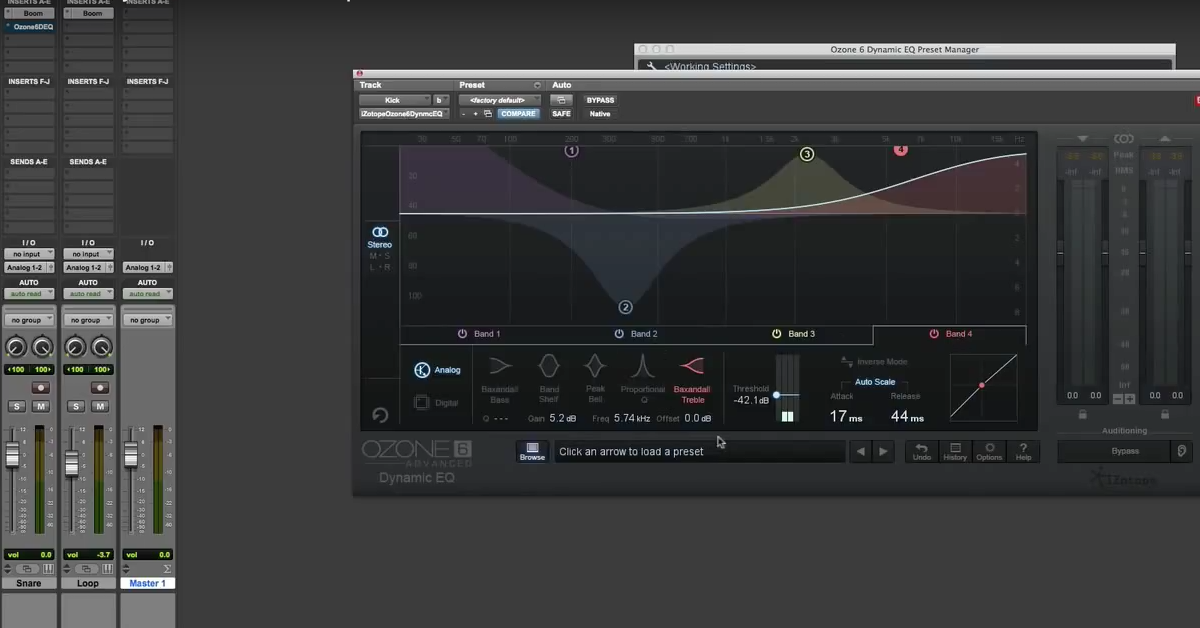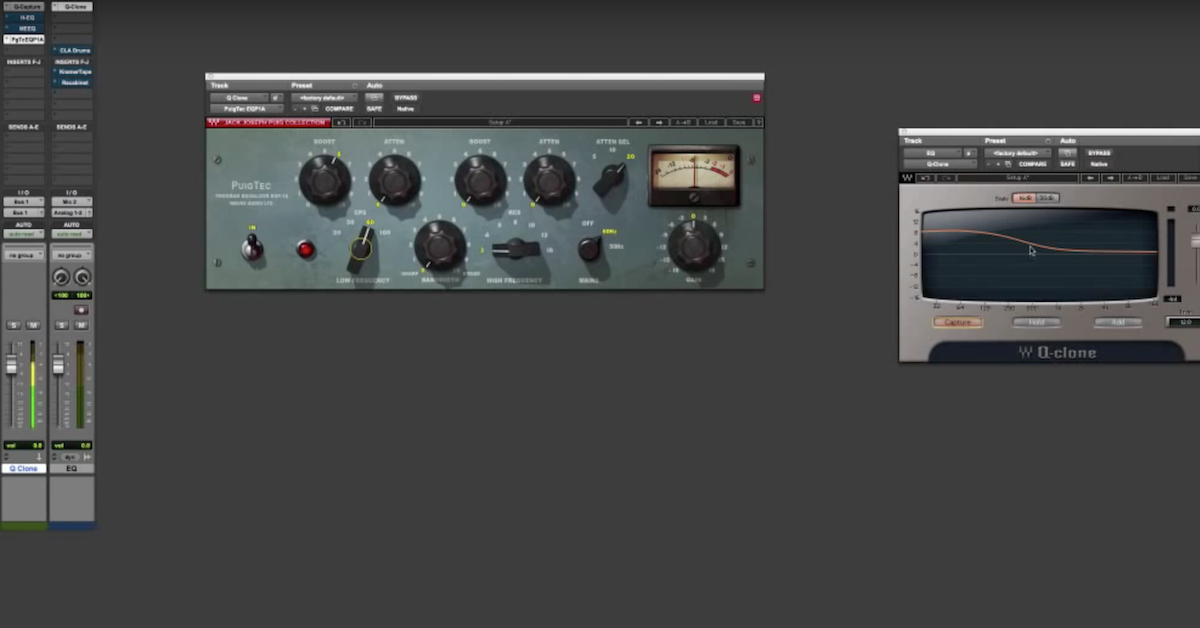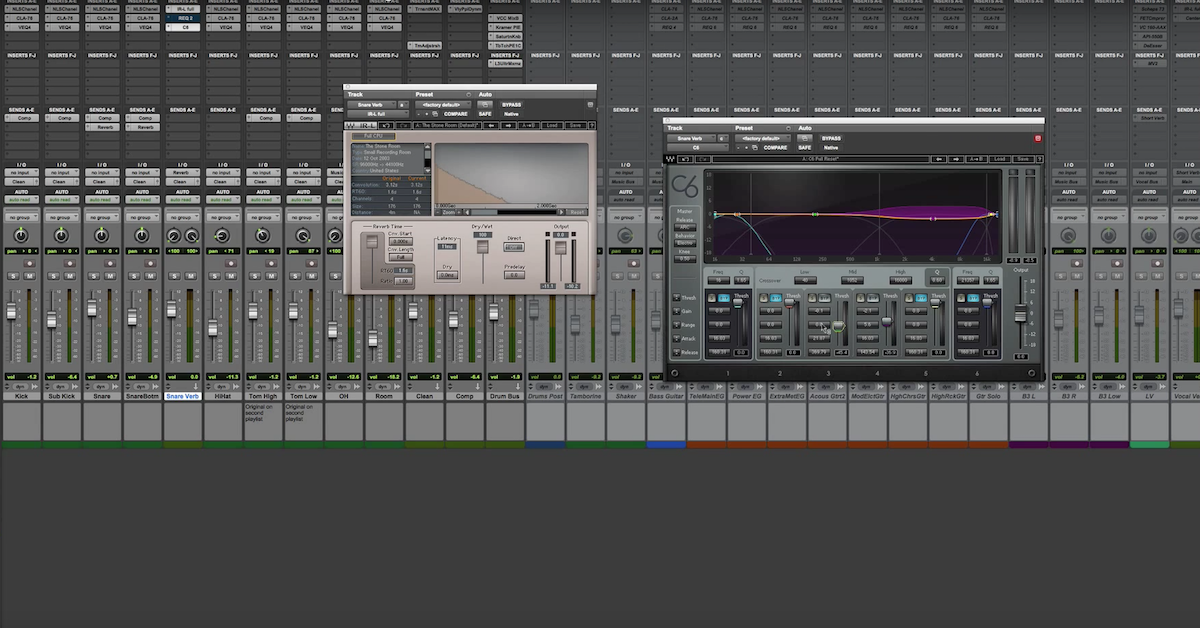5 Reasons I Love Recording With an AKG C414
Article Content
The chances that I would actually have to sell all of my microphones except one are low — like, very low — but for whatever reason, it’s a hypothetical situation I’ve thought about. If that fateful day does ever arrive (Selling gear to cover bills? Convinced most of my mics are haunted by evil ghosts?), I can say without question that the one mic I’d keep is my AKG C414 B-ULS. I use it on nearly every session I work on, and it gets used more than any other mic I own. I would confidently use it on just about any instrument, and it’s the one mic I know will never disappoint me when other options feel lacking.
A Little Bit of History
The C414 — all incarnations — is the descendent of the venerated C12, a tube condenser known for its silky high end and a studio staple since it was launched in the 1950s. Addressing demand for a similar sounding mic in a smaller package, AKG produced the C12A, which still incorporated a tube, but a smaller one that would fit into a body with a profile very similar to the later C414.
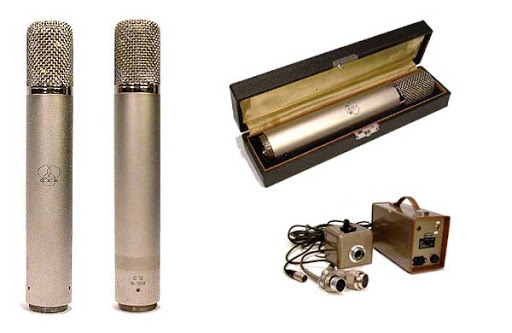
AKG C12 and power supply
Over the years, the tube-based design was swapped for one that utilized phantom power, built around a FET. By the early 1970s, mics with variants of the name C414 were in production. Eventually, the CK12 capsule that defined the sound of the C12 and early 414s was replaced with a simpler nylon element. The new capsule featured a darker sound that would become characteristic of C414 iterations that appeared over the next couple decades (like my beloved B-ULS).
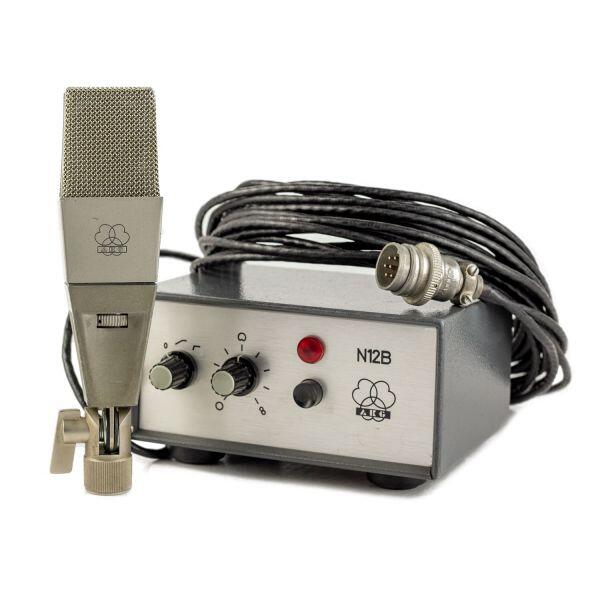
The C12A – not much of a family resemblance
AKG has continued to tweak the sound and design of the C414 over the years, but at no point has the mic ever ceased to be a must-have piece of gear for serious studios. Though some versions sound noticeably different from others (the modern TLII is a prime example), many iterations share a similarly detailed but unhyped sound.
My experiences with these mics have overwhelmingly involved the B-ULS and older EB versions, and your experience with another version may differ from mine. Hair-splitting aside, I’m going to lay out a few reasons why I can’t imagine recording without one of these mics at the ready, and why I think you should take a serious look at them too.
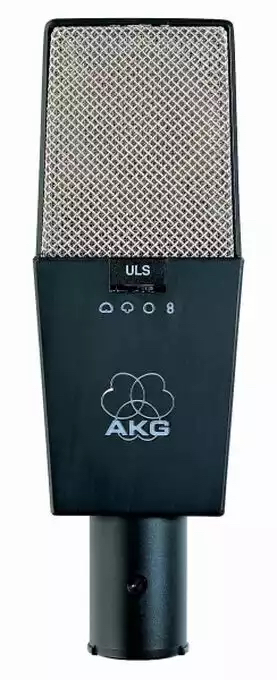
My lil’ buddy B-ULS
1. It’s Got All the Features You Could Ask For
The C414 was perhaps the first “nice condenser mic” I was able to become familiar with during the early stages of my career recording music. In some ways, I think that experience spoiled me a bit, because I was routinely disappointed when I encountered other condensers and realized they lacked the polar patterns, filtering and pad options that are standard on just about every generation of the C414.
Vintage versions of the mic offer four pickup patterns: cardioid, omni, figure 8 and hypercardioid. That one switch means that the 414 is a contender for close placements, room placements, placements in tight spots and niche stereo techniques like Blumlein and mid/side.
On top of that, it’s got both -10 and -20 dB pads, and it handles high-SPL sources excellently. It also has two options for low frequency rolloff, with cutoffs at 75 and 150 Hz. All of those options mean that whatever it is you need to do with your C414, it almost definitely has a setting that will make it the ideal mic for the task at hand.
2. It Can Be Used on Just About Anything
Following that last point to its logical conclusion, I can safely say that you can put the C414 in front of pretty much any instrument and not be let down. It boasts a flat, full frequency response, which means it can reliably capture instruments with lots of low frequency information (like bass or kick drum) or instruments that can play a wide range of notes (like piano or harp). Its unhyped frequency response means you can also safely place it in front of instruments with aggressive upper midrange and high frequencies without things getting shrill or harsh.
Need a mic for lead vocals? No problem. Guitar? Absolutely — acoustic, electric, whatever. Strings, horns, piano? I think you’re starting to get the picture. Recording drums, I’ve used C414s as overheads, room mics, on kick, toms and underneath the snare. If you need just one more drum mic and you have a C414 lying around, chances are it can handle the job, whatever that happens to be.
3. Balanced Tone Without Hype
Though the different versions of the C414 over the years each have had their own characteristic sound, they all share a few features in common. One is ruler-flat frequency response from 20 Hz up to around 1 kHz. Several generations (including my beloved B-ULS) feature a dip in the high midrange (2 kHz – 5 kHz) before introducing a gentle bump in the range from 5 kHz to 15 kHz.
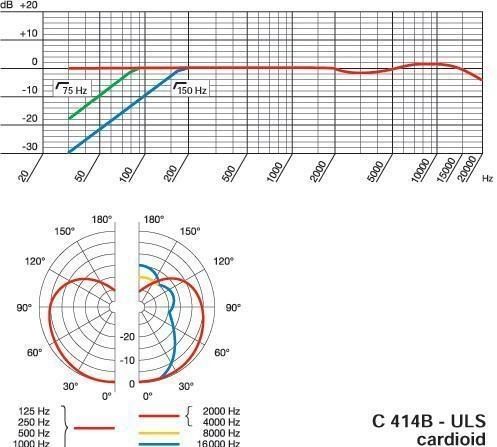
The B-ULS offers a largely flat frequency response and a neutral, versatile sound
The result is a mic that delivers without seeming like it’s trying to impress you. There’s no “presence bump” or aggressive high end like you might find on a condenser marketed exclusively as a vocal mic. While that means you might not get that “already mixed” vocal sound as soon as you hit record, it also adds to the mic’s versatility.
Aggressive upper midrange and high frequency response makes for shrill cymbals, strings and electric guitar. And while some voices will benefit from an added sense of presence and clarity, others will come across as harsh and grating.
So while you may find yourself reaching for EQ to add some sparkle or brilliance to some recordings made with a C414, you’ll rarely find yourself reaching for EQ to “fix” anything. It’s much easier to improve a “just fine” recording than it is to salvage a bad one, and I appreciate that the C414 offers an issue-free lack of hype rather than enticing, but problematic, cheap thrills in its upper midrange. That characteristically balanced tone brings me to my next point, which is…
4. It Takes EQ Very Well
Yup, I’ll admit it, there are times that my C414’s tone out of the box can sometimes be unexciting. Don’t get me wrong, though, I’m not complaining. The whole appeal of this microphone for me is that there is generally nothing wrong with the sounds it captures.
Yeah, “nothing wrong with it” doesn’t sound that impressive as a sales pitch, but here’s the thing: “nothing wrong” is a great starting point for processing. It’s a much better starting point than “sometimes this mic sounds perfect but right now I’m hearing some obvious problems.” The former is easy to touch up with some EQ, but the latter probably involves some unsatisfying compromises.
So, to that end, the C414 performs admirably with some carefully chosen EQ. Many sources will benefit from some added high end or upper midrange. In other cases, the flat lower midrange may mean some cuts are needed to tame wooliness.
Given the reasonable price tag on a C414, I feel just fine about spending 5 minutes dialing in an EQ curve to get a sound I like. I feel way better about it than I would doing the same thing to get a $5k tube condenser to sit right in a mix.
5. When Other Mics Fall Short, It Delivers
On a lot of sessions, the C414 might be the last player picked for the team, but that isn’t because it underperforms — quite the opposite! When it isn’t my first choice for important placements like drum overheads or lead vocals, it’s just about guaranteed to perform admirably wherever I do end up using it. There are plenty of mics in my collection that I turn to as a first choice almost reflexively — like an SM57 over a snare drum — but I would have serious hesitation using them in unconventional placements. For instance, an SM57 works for some vocalists (for real — Google it), but I wouldn’t bet on it in most cases.
When I realize I need to put one last mic up, and the band is getting antsy to start recording, I know I can pull out my B-ULS, get the level set and be ready to roll. Chances are, when I start mixing, that choice is not going to cause me any headaches.
Before You Go Shopping…
Have I gotten you stoked to add a C414 to your mic locker yet? If you do decide to pull the trigger, I’m confident it will spend more time on a mic stand than its similarly priced peers due to that famous versatility I’ve been writing about. Before you get out your wallet, though, you should make sure you’ve found the version that’s right for you.
The generation I know the best is the B-ULS. It’s the one I first heard, and it’s what I use in my own studio. It has the characteristically woody and neutral sound I’ve been describing here. Used B-ULS’s are still pretty easy to come by, though the price has been climbing in recent years. The more sought-after EB versions will run even more on the used market — but as proof of their legendary status, there are affordable boutique clone versions available as well.
The current production versions (the TLII and XLS) boast more pickup patterns (9 total) than previous models. The TLII features a lifted high end that puts it closer in line with its great-grandfather, the C12. It’s marketed as more of a vocal mic than an all-purpose studio workhorse. The XLS is sonically closer to the ULS and EB, with a flatter frequency response that makes it more of a Swiss Army Knife than its vocal-focused sibling.
If your mic budget is a little shy of the price tag on a real 414, AKG also makes two stripped-down alternatives (the C214 and C314) that feature similar components but fewer pickup patterns (just cardioid on the 214, and the classic four options on the 314).
If you’re looking to add a high-quality condenser mic to your setup and need something that works for more than just vocals, the C414 should absolutely be on your short list. If you have one and don’t already use it all the time, pull that thing off the shelf for your next recording session. EQ or not, I bet you’ll be pleasantly surprised.



